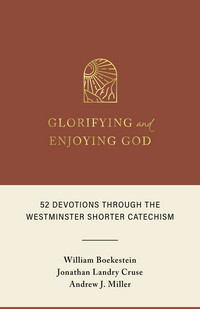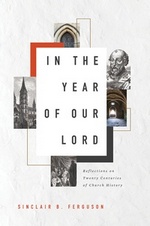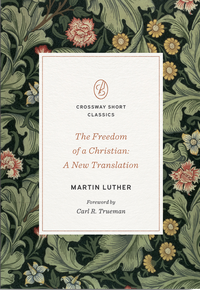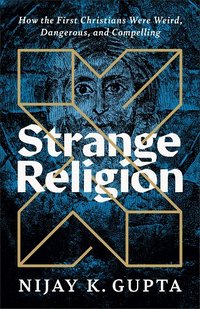 God of All Things: Rediscovering the Sacred in an Everyday World
God of All Things: Rediscovering the Sacred in an Everyday World
DETAILS: Publisher: Zondervan Publication Date: March 2, 2021 Format: Paperback Length: 202 pgs. Read Date: January 12-19, 2025

But instead [God] made a universe filled with things. Objects. stuff Planets, weather, colors, animals, vegetables, minerals. People, complete with noses and kidneys and bodily fluids. It is Curious: an immaterial and entirely spiritual God created a thoroughly material and physical world. Perhaps it should surprise us more than it does…
For Paul in Romans 1, creation reveals God’s invisible power and divine nature. Few of us can stand in front of the Grand Canyon or see a high-definition picture of the Horsehead Nebula without wanting to praise somebody or something for the majesty of what is before us. Some of us will suppress that urge. But those of us who don’t and allow the song of gratitude to swell within us like a storm will find ourselves concluding all sorts of things about our Maker. The God of the Sahara must be vast, boundless, and expansive. The God of quarks must have an unimaginable eye for detail. The God of wombats must have a sense of humor. Everything in creation has theological implications, and one of the joys of being human is figuring out what they are.
What all of these answers have in common is the fact that creation points beyond itself. Things ‘exist not for their own sakes but to draw us back to God. In Augustine’s image, the gifts of God in creation are like a boat which takes us back to our homeland: a means of transport which we can {and should} celebrate but never mistake for the destination itself. C. S. Lewis talks about following the sunbeams back to the sun so that we enjoy not just the object of goodness but the source of good. Creation preaches to us. The things of God reveal the God of things.
What’s God of All Things About?
That extended quotation from the Introduction is basically the foundation for this whole book (he does expand it a little from there). God made things. He uses those things to point to Him in various ways. This book takes 30 of the common, everyday things in this world and shows us (some of) the ways that they pointed to God and His redemptive work in Scripture—fifteen items per testament.
I won’t list all thirty things that get a short chapter devoted to them, but to give you an idea some are: earthuqakes, tools, honey, donkeys, flowers, pots, viruses, and flowers.
An Example
I really don’t know the best way to describe how Wilson approaches these items (although I don’t want to sound like every chapter follows the outline), so here’s a paragraph and change from Chapter 3, “Pigs: The Welcome of God”:
As gentiles, by nature unclean and separated from Israel ourselves, we can feel a certain sympathy for [pigs].
That is not where the similarity between pigs and gentiles stops. The first person who ever preached the gospel to gentiles was the apostle Peter, and he did so only because he saw a vision of a sheet full of unclean animals (Acts 10:9~16)—a vision in which, we may assume, pigs played a starring roleand heard a voice telling him to eat them, since “what God has made clean, do not call common” (v. 15). Non-Jewish people like me got baptized only because Peter saw a bunch of pigs and other unclean animals, and then saw a bunch of gentiles, and then saw the resemblance. “You yourselves know how unlawful it is for a Jew to associate with or to visit anyone of another nation,” he explained to the gentiles who had invited him over for a visit, “but God has shown me that I should not call any person common or unclean” (v. 28). That’s a nice way of putting it. Even Peter, not always the most diplomatic of the apostles, had the good manners not to mention that his hosts were the equivalent of a sheet full of pigs, scallops, and snakes.
Not only does that give you a little hint of Wilson’s voice, but it gives a flavor of his approach. That’s from the Old Testament portion, but he’s invoking Peter and events from the New Testament. He looks at the use of whatever item throughout the canon, showing how they’re used in the primary texts he’s considering, what they say about God, they say about redemption and people.
Strengths
There are several, really. Some of the chapters (like Rainbows) seem pretty obvious in the aim and content. The chapter on the Wind, on the other hand, went in directions I wasn’t expecting. But beyond that, what he did in a few pages to describe the work of the Spirit—particularly the discussion of “being filled with the Spirit”—was so rewarding.
The chapter on Salt was also helpful—if only for the discussion of how metaphors can have several interpretations and meanings at the same time. As anyone who has ever heard more than one sermon on Matthew 5:13 knows too well, it’s ripe for interpretation. Wilson wisely encourages readers to embrace the probability that Jesus meant more than one thing by the metaphor of salt.
So, what did I think about God of All Things?
We worship a God of things. The cosmos is filled with them: everyday, mundane, quotidian, humdrum, ordinary things. Sometimes they delight, sometimes they exasperate, and sometimes they escape detection altogether, but whether quietly or loudly, they insistently point beyond themselves to the God who made physical stuff. Everything in creation tells us something about our Creator.
More than once on The White Horse Inn, I heard Rod Rosenbladt say, “God likes stuff [or matter], he made it.” It’s this notion—reflected in this quotation here, or the one that kicked off this post—that is too easily forgotten by modern Christians who (like many others in the last 100+/- years) have adopted a quasi-Gnostic attitude toward matter and spirit. So any book that seeks to remind anyone of that deserves attention.
In many ways, this reminded me of Finding God in the Ordinary by Pierce Taylor Hibbs. But where Hibbs looked at things around him and used them to launch his thoughts God-ward, WIlson looks at things around people in the Bible and uses them to take in the themes from Scripture and launch thoughts God-ward from there. Similar ends, similar means—just slightly different starting points. I’m not suggesting one is superior to the other in any way. In fact, I’m trying to work both exercises into my own life.
It’s a quick read, it’s a fun read (Wilson’s gentle wit and fairly mainstream pop culture references are nice for that), it’ll likely cause you to think of a few things you haven’t before, or will be a reminder that it’s not just the big things in nature that testify to the glory of God (the heavens, stars, and so on), it’s the little things, too (salt, lilies, sparrows, falling hairs)—and things in-between. I recommend this for your attention, it’s fit for High School (maybe younger) and up. Which probably includes you, reader.

This post contains an affiliate link. If you purchase from it, I will get a small commission at no additional cost to you. As always, the opinions expressed are my own.
![]()









 The seeds of this book were first published in a book Ferguson co-authored called, Church History 101: The Highlights of Twenty Centuries — he’s now taken those chapters, done more research (being retired has freed up some time for him to do some reading), and expanded that into this great survey of Church History.
The seeds of this book were first published in a book Ferguson co-authored called, Church History 101: The Highlights of Twenty Centuries — he’s now taken those chapters, done more research (being retired has freed up some time for him to do some reading), and expanded that into this great survey of Church History.






